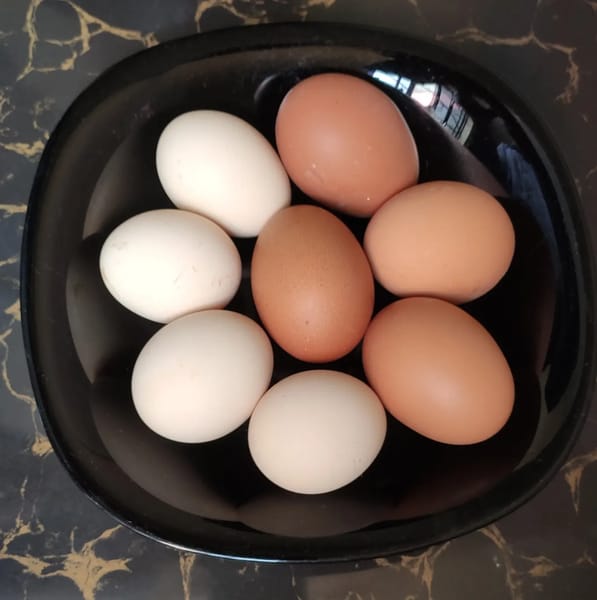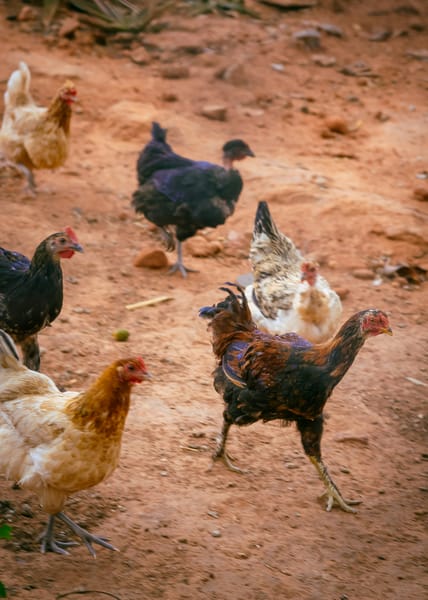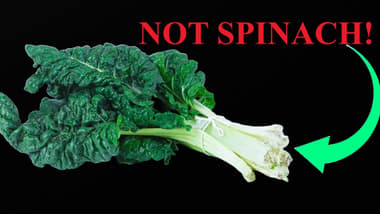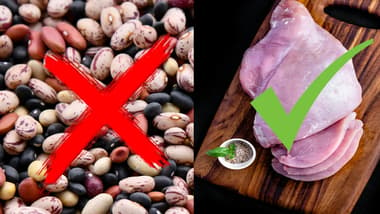No, Kienyeji Eggs Are Not Better Than Regular Eggs
Kienyeji eggs cost nearly twice as much as cage/grade layer eggs, but research shows no significant nutritional difference between them.
Kienyeji eggs cost nearly twice as much as cage/grade layer eggs, but research shows no significant nutritional difference between them.
Kienyeji eggs often cost almost twice as much as regular eggs; typically about 20–25 shillings per egg versus 13–15 shillings for eggs from commercial layer chicken breeds kept in cage systems.
The higher price isn't only about lower yields from kienyeji chickens but also usually justified with claims that they are nutritionally superior.
However, a closer look at the research shows that, nutritionally, the difference is almost non-existent.
In fact, some studies (as you'll see below) suggest that free-range kienyeji eggs can carry a higher microbial load and may be more prone to heavy-metal contamination if the outdoor environment isn't well managed.
Please note that in this article, regular, or 'cage eggs,' refers to eggs from commercial layer chickens kept in cage systems. These are also called 'grade eggs' or 'grade layer eggs' locally.
In This Article:

Contrary to popular belief, kienyeji eggs are not the same as organic eggs, at least not on paper.
"Organic" is a standardized label with specific requirements, as defined by the USDA's National Organic Program in the U.S. or by the Soil Association in the UK, covering housing, outdoor access, feed, drug use, and third-party verification.
Farmers in those countries must meet these standards to legally sell their eggs as organic, something that's still missing in Kenya.
Kenyan usage is different. Here, kienyeji generally refers to indigenous chickens. There are no uniform national standards for how indigenous birds must be reared.

The lack of rules means farmers can feed them anything, including commercial feeds, kitchen scraps, or whatever the birds forage, administer drugs without restriction, and still market the eggs as "kienyeji."
Some may even confine them during planting seasons to prevent crop damage. In most cases, though, kienyeji birds are free-range.
These management differences can influence final egg quality, especially since many small farmers (in my experience) don't invest heavily in high-quality feeds for kienyeji flocks.
Visually, kienyeji eggs are typically creamy-white-shelled, with yolks that cook to a bright yellow (mainly due to carotenoid-rich diet from foraging). Conversely, cage eggs from layer breeds are usually brown-shelled, and their cooked yolks tend to appear dull yellow, sometimes even creamish (if fed a diet poor in carotenoids).
For many shoppers, these visual differences alone are enough proof of kienyeji superiority.
But this could not be further from the truth.
This comparison leans heavily on local studies, primarily because many international papers pit organic vs. caged rather than indigenous vs. improved caged eggs.
Still, because organic systems typically include some degree of outdoor access for chickens, those findings are useful context for building the evidence base here.
A 2017 JKUAT study by Chepkemoi and colleagues compared eggs from indigenous, commercial, guinea fowl, and quail birds in Kenya and found no significant difference in protein, fat, or moisture content across species.
This means that, nutritionally, a kienyeji egg offers roughly the same macronutrient value as a commercial caged layer egg, despite the visual and price differences.
Essentially, you're not getting more protein from a kienyeji egg.
However, keep in mind that egg size affects the amount of protein you get from it, and since kienyeji eggs tend to be smaller, you're likely to get more protein from cage or grade-layer eggs, which tend to be bigger.
Similarly, a 2015 paper published in the Assiut Veterinary Medical Journal compared organic and conventional table eggs and reached the same conclusion: there was no meaningful difference in nutritional content or bacterial load significant enough to claim one was superior.
"There is no scientific evidence that organic eggs possess additional benefits over conventional ones."
Some minor variations exist in minerals, but they are inconsistent and depend largely on feed and environment rather than breed.
The JKUAT study found no difference in zinc, fat, or protein between indigenous and commercial eggs when size was normalized.
However, commercial chicken eggs had the lowest zinc and iron values, likely because of substandard commercial feeds.
(For context, the study also found that quail eggs were highest in iron content and that domesticated guinea fowl eggs contained slightly higher calcium levels, though neither were part of this comparison).
Globally, the results suggest mixed findings.
In a review published in Egg Innovations and Strategies for Improvements, Küçükyılmaz and Bozkurt (2017) found that organic eggs contained lower phosphorus and zinc but slightly higher selenium than conventional ones.
Meanwhile, Filipiak–Florkiewicz et al. (2017) observed that organic yolks tended to have more potassium and copper, while conventional ones were richer in magnesium and iron.
As they put it, each type "showed advantages in different nutrients," meaning one isn't universally better than the other.
When it comes to food safety, cage systems have a slight edge.
Aygun (2019) reported that free-range and organic eggs showed higher shell microbial contamination and a greater likelihood of dioxin accumulation than cage eggs.
Similarly, the Assiut study (2015) found that while both organic and conventional eggs carried bacteria, the bacterial counts were nearly ten times higher in organic samples.
This makes sense when you think about production environments. Kienyeji and other free-range eggs are often laid and collected in open areas, like on soil, near droppings, or among vegetation, which increases their microbial exposure.
Cage systems, though industrial, limit such contact, leading to cleaner shells and fewer contamination risks.
So, if you love kienyeji eggs, just make sure you cook them thoroughly; it's the simplest way to avoid any health risks.
In some studies, researchers have also noted a higher risk of heavy-metal contamination; mainly from soil contact or environmental exposure.
Küçükyılmaz and Bozkurt (2017) observed that outdoor access can expose hens to trace elements like lead and cadmium, especially when the soil or feed ingredients are contaminated.
While heavy metal contaminant levels on eggs are rarely dangerous, they show that what chickens eat, and where they roam, matters just as much as how they're raised.
For many Kenyans, kienyeji eggs are not just about nutritional value but identity.
They remind people of the countryside, of food "from home," and perhaps of a time before animal feeds and mass farming. That emotional connection is significant and, quite frankly, understandable.
The visual differences, at least in my experience with some Kenyans, also play a big role. Most prefer the bright yellow yolks of cooked kienyejis and even swear by the eggs' better taste.

A 2022 study by Khaemba et al. on Kenyan consumers found that most buyers, while receptive to new farming methods, tend to link their preferences to trust. Thus, pro-kienyeji consumers are likely to consider aspects such as ethics and traceability when choosing their eggs.
So, in the end, the preference is just cultural.
People usually buy kienyejis at higher costs for what they represent: tradition, freshness, and a small defiance against industrial farming. And maybe that's fine, as long as we don't mistake that emotional or cultural attachment for scientific proof that they're healthier.
Editor's Note: Nutrient levels and contamination risks can vary depending on feed quality, soil conditions, and farm hygiene. The findings discussed here represent general trends from available studies, not specific results from every farm or region.
Prices mentioned reflect per-egg retail costs in Kenyan markets as of October 2025 and may vary by region and vendor.
Proofreading by Grace Njoroge, copy editor at Fit Savanna.
Continue reading with these related fitness and health articles




Join the conversation!
Share your thoughts on "No, Kienyeji Eggs Are Not Better Than Regular Eggs" below.